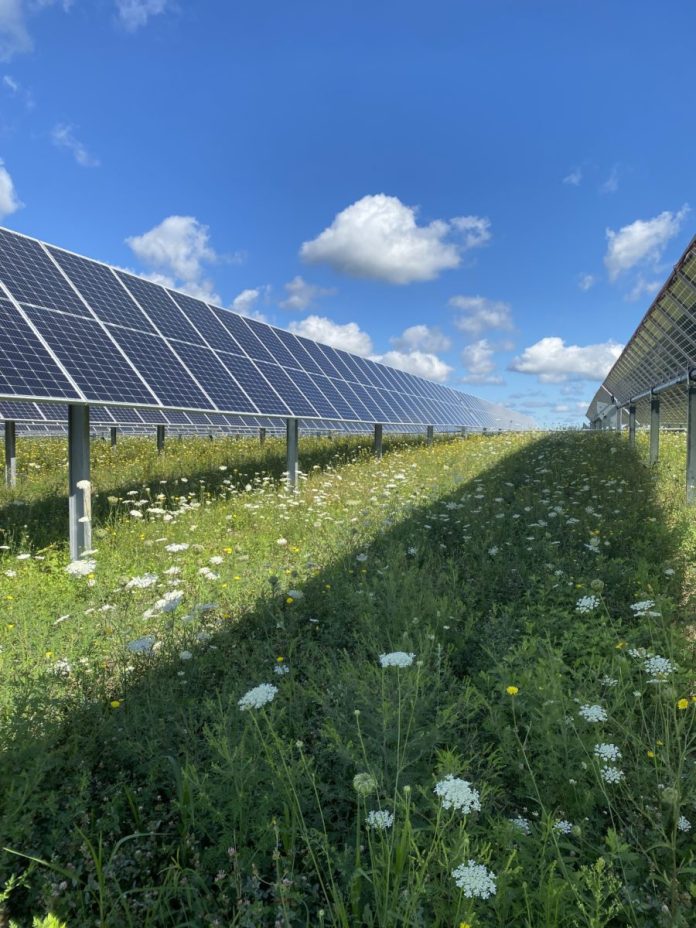Proposed legislation from two U.S. Senators would prioritize pollinator-friendly solar facilities for government funding, ahead of traditional, compacted dirt facilities.
Senators Merkley of Utah and Booker of New Jersey have introduced the Pollinator Power Act of 2023 to the U.S. Senate for consideration.
The legislation aims to make pollinator-friendly habitat development at solar power facilities eligible for loans and grants under the Farm Bill. The bill specifies that agricultural producers, rural small businesses and farmer owned cooperatives that build solar power facilities and receive federal funding may include pollinator habitat construction costs in their funding calculations.
The bill restricts the coverage of pollinator habitat construction costs to no more than 55% of the total cost. It further stipulates that at least 35% of the ‘new soil area’ developed under the project must be allocated to pollinators. Moreover, a minimum of 50% of pollinators must be planted and maintained as a native cover, exclusively comprising native plant species.
The legislation also indicates that solar projects that incorporate pollinator-friendly habitats will be given greater grant consideration over projects without such habitats.
Concurrently with the submission of this bill, Senators Martin Heinrich (D-NM) and Mike Braun (R-IN) broke the partisan mold by introducing the $75 million Agrivoltaics Research and Demonstration Act of 2023. If enacted, the law would allocate funding at a rate of $15 million per year from 2024 through 2028. The act stipulates that the Secretary of the Department of Agriculture (USDA) must collaborate with the Secretary of the Department of Energy (DOE) and other pertinent specialists to conduct extensive research and demonstrations of agrivoltaic systems.
According to Cathy Day from the National Sustainable Agriculture Coalition, these “marker bills” indicate the senators’ desire for these provisions to be incorporated into the upcoming Farm Bill – the Farm Security and Rural Investment Act of 2002 – which is renewed every five years.
The Pollinator Power Act aligns with recent research indicating that retrofitting 217 existing utility-scale solar facilities with pollinator-friendly habitats could yield up to $264 million annually for the U.S. farming industry. Such habitats, when combined with sheep grazing, can sequester up to 80% more carbon. While classifying pollinator-friendly habitats as agriculture might be a stretch, there’s no doubt, as evidenced by the 217 solar facilities, that they significantly support agriculture. Furthermore, polls suggest that a solar facility incorporating food production would garner more favorable views from 81% of respondents.






